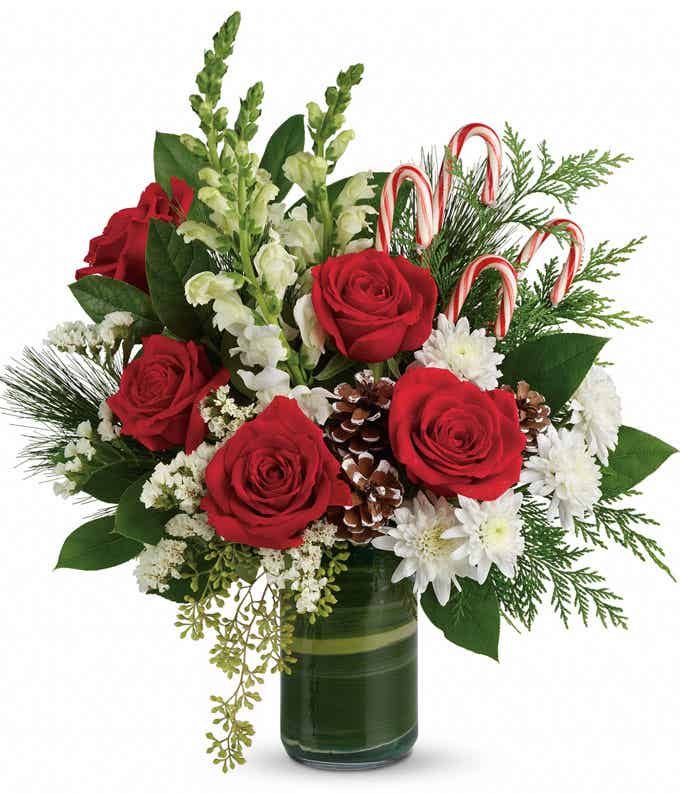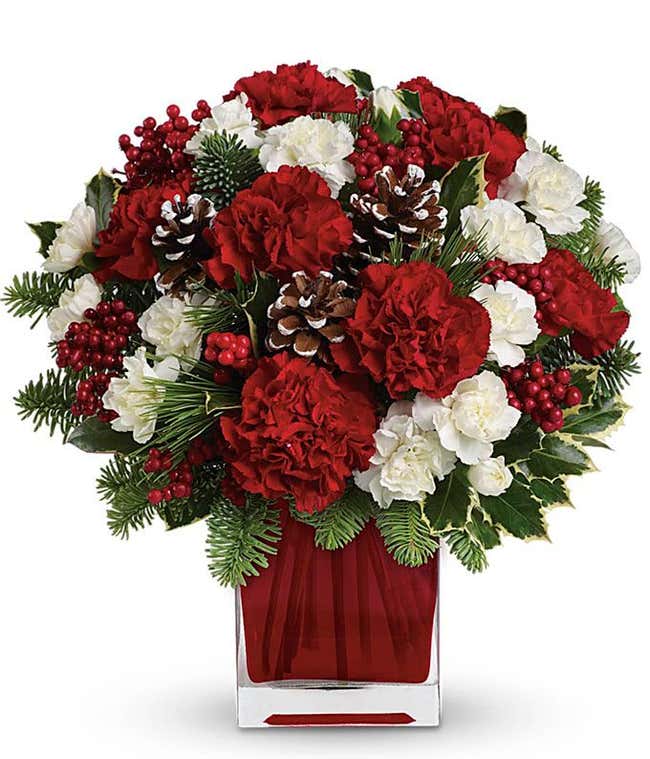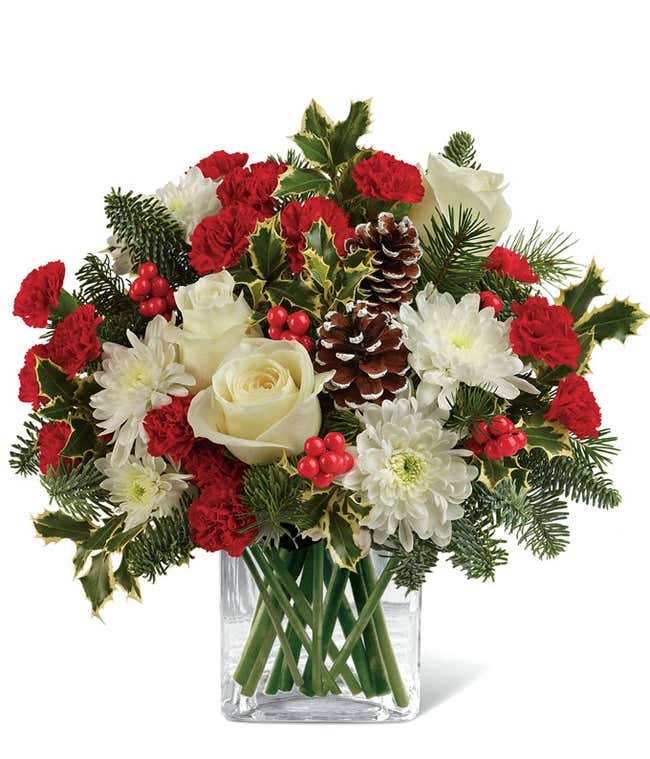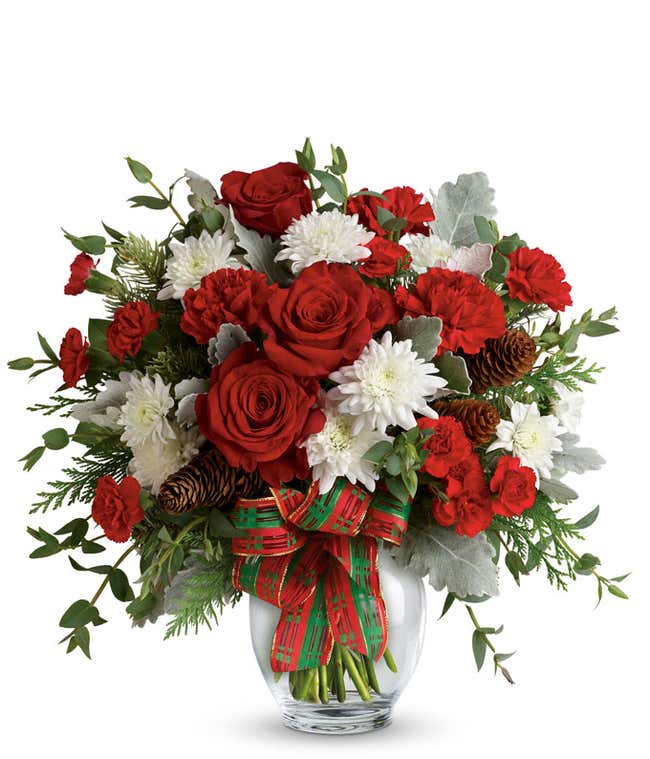- Flower Resource Guide Home
- Occasions
- Anniversary
- Birthday
- Business
- Christmas
- Christmas Around the World
- Christmas Decorating
- Christmas History Trivia
- Funeral & Sympathy
- Funeral and Sympathy Flowers
- Funeral and Sympathy Etiquette
- Types of Funeral Flowers
- Get Well
- Halloween
- This History of Halloween
- Halloween Decorating & Craft Ideas
- Mother's Day
- Gift Ideas for Mother's Day
- What Day Does Mother's Day Fall On?
- Mother's Day History
- New Baby
- Thank You
- Thanksgiving
- History of Thanksgiving
- Thanksgiving Flowers & Crafts
- Valentine's Day
- History of Valentine's Day
- Valentine's Day Flowers & Gifts
- Decorating with Flowers
- Flower & Plant Care
- How to Keep Flowers Fresh
- Flower Meanings
- Meaning of Roses
- Floral Astrology
- Flowers for Men
- Fun Flower Facts
- What are the Different Parts of a Flower?
- What are the Most Popular Houseplants?
- State Flowers
- New Jersey
- North Carolina
- Flower Names for Kids
- How to Make Chocolate Covered Strawberries
- What is the Purpose of Flowers?
- Benefits of Flowers and Plants
The history and origins of Christmas date back over 4,000 years. Throughout the years, many civilizations practiced specific cultural traditions that we see remnants of in Christmas celebrations to this day. However, it is widely believed that the original ideas behind the Christmas holiday - the twelve days of Christmas, the Yule log, exchanging of gifts, carolers signing from house to house, the holiday feasts, and the widely attended church processions - these can all be traced back to the Mesopotamian celebrations held during the end of the year during the Winter Solstice. At that time, the Mesopotamians believed in many gods, and Marduk was their chief god. Marduk conquered Tiamat, the primeval god of chaos, and as a way to honor his struggle with Tiamat and his reign as the god as Lord of the Gods, the Mesopotamians held a twelve day long festival called Zagmuk.
Many other cultures had similar festivals to celebrate their gods, and many were celebrated close to the Winter Solstice. As the days grew shorter and darker during the winter months, many believed that the sun would never reappear. When winter finally ended and the sun reappeared, the people held days of celebrations and special rituals to welcome back the Sun and to honor their chief gods, who they believed played an intricate part of the return of the sun. In Scandinavia, when the first light was seen from the sun, large bonfires would be lit, and a great festival, known as the Yuletide, was held; during the festival a special feast would be prepared and served around a fire burning with the Yule log. The Romans celebrated their god Saturn with a festival called Saturnalia and held masquerades in the streets, cooked big festive meals, exchanged good-luck gifts called Strenae, and decked their halls with garlands of laurel and green trees lit with candles.
As Christianity spread, it was decided that the celebrations and festivals would more suitable if they held as a celebration for the birth of the Christian Son of God. Although the exact day of Christ's birth is unknown, in 350 AD, a bishop of Rome, Julius I, declared December 25th as the official day to observe Christmas.
Christmas Around the World:

Christmas is a holiday that is celebrated worldwide, but the traditions of the holiday vary from country to country. In most areas where Christianity is not as widely practiced, the focus on Christmas is less on the religious aspect, and more on family gatherings, the exchanging of gifts, decorating homes and in some cases, Christmas trees, as well as singing festivals and caroling. Most countries have particular food or drink consumed specially during the holiday:
• Austria: Traditional cakes called "kekse" are widely available during the Christmas season.
• Belgium: It just wouldn't be the Christmas & New Year's holiday without sauerkraut!
• Finland: The days before Christmas are usually spent inviting friends over to enjoy a glass of glögi, or mulled wine.
• Germany: Christmas is symbolized by the famous stollen, traditional holiday bread that
derives from a tradition more than 500 years old!
• Italy: The most traditional of Italian Christmas cakes, Panettone, has been sold in Milan in its festive wrappings since medieval times.
• Great Britain / UK: The traditional Christmas meal is stuffed turkey served with Christmas pudding, which typically contains an assortment of dried fruits, nuts, flour, eggs, suet or butter, spices, and an abundance of alcohol. It usually comes to the table sprigged with holly and flaming with brandy. Mince pie is also widely popular.
• Greece: Two varieties of cookies are very popular in Greece during the Christmas holiday – Melomakarona (mix of semolina, cinnamon and clove drenched in honey) and Kourabiedes (rosewater and fresh butter cookies sprinkled with powdered sugar). On Christmas Eve, many households will make bread called Christopsomo, which has a cross carved into the top crust before it is baked, signifying the importance of the holy day.
• Romania: Pork is the main dish for the Christmas holiday. Every part of the pig is used in preparing the holiday meals.
• Spain: It is particularly common for a Christmas meal in Spain to begin with a seafood dish such as prawns or salmon, with a main dish consisting of roasted lamb, cod or shellfish.
• Sweden: Traditionally, the high point of the holiday season is the smorgasbord of fare prepared for Christmas Eve and Christmas day consumption. The meals usually consist of pork, seafood dishes, and an assortment of fruit cakes, biscuits and cookies for dessert.
• Portugal: On Christmas morning, a feast known as the "consoda" typically takes place during which extra meals are set at the table for the souls of the dead; gifts of food are left for these souls in the hope that it will bring good fortune in the coming year. The food can consist of a variety of fish, wild meats, and traditional cakes, fried cookies, and nuts.
• Australia: As Christmas falls in the summer months of Australia, typically the Christmas feast is a lunch of prawns, steak and chicken. Many families will pack a picnic to eat at the beach or nearby park.
• Russia: Christmas foods include cakes, pies, and meat dumplings.
• Greenland: The Christmas feast may include Little Auks (small birds similar to penguins) that are wrapped in sealskin and buried until they decompose.
• Italy: The Christmas feast in Italy is truly a feast - it can include up to seven courses including antipasto, pasta, roasted meats, salads, puddings, cheese, fruit, assorted brandy and liquors, as well as chocolates.
• Jamaica: The traditional Christmas dinner can include rice, gungo peas, chicken, ox tail, and curried goat.
Fun Facts & Trivia:
Did you know?
• The artificial Christmas tree originated in Germany and was originally made of metal wire and decorated with goose, turkey, ostrich or swan feather. The feathers were often dyed green to imitate pine needles.
• Edsel Ford, further president of Ford Motor Company, wrote the following letter to Santa from Detroit, Michigan: "Dear Santa Claus, I Havent had any Christmas tree in 4 years and I have broken my trimmings and I want a pair of roller skates and a book I cant think of any thing more. I want you to think of something more. Good by." - Edsel Ford
• The first eggnog made in the US was consumed in 1607 in a Jamestown settlement according to reports by Captain John Smith.
• In the 16th century, Martin Luther was said to have decorated a small Christmas tree with candles to show his children how stars twinkled through the dark knight.

Where did the tradition of hanging stockings originate?
The tradition of hanging stockings is varied from country to country. Generally, it is believed that the night before Christmas, the stockings were hung over the fireplace to dry. At some point during the night, St. Nicholas, in his trek down the chimney or his passing over the home, lost some gold coins or small presents down the chimney, and the gifts landed in the stockings, only to be found to the sheer delight of the stockings' owners in the morning. To this day, children all over the world leave shoes or stockings by the fireplace or door, hoping to find specials treats when they wake in the morning.
Where did mistletoe come from?
Mistletoe has long been held sacred by ancient civilizations: The Druids would cut mistletoe from an oak tree with a golden sickle; the branches had to be caught before they touched the ground to preserve their sanctity. The branches were then divided into sprigs and hung over doorways as protection against evil. It was also believed that a sprig of mistletoe placed in a baby's cradle would protect the child from goblins, or that giving a sprig to the first cow calving would protect the entire herd. Mistletoe is also seen as a symbol of peace and joy. During the time of the Druids, whenever enemies met under the mistletoe in the forest, they had to lay down their arms and observe a truce. The custom of hanging a ball of mistletoe from the ceiling and exchanging a kiss as a sign of friendship, goodwill, or even love, is said to have originated from that tradition.
How did Candy Canes come to be so popular?
During the 17th century, throughout Europe, religious ceremonies were held in honor of the Christmas holiday at the living creche, or the Nativity scene. It is said that at the urging of the choirmaster at the Cologne Cathedral in Germany, craftsmen created white sticks of candy shaped like shepherd's crooks to be given to children to keep them quiet during the ceremony. During the mid 1800s, a man in Ohio used these "hooks" of candy cane to decorate his tree and as a means to entertain his young nieces and nephews. Many who saw his decorations went home to experiment with canes of their own, and their popularity grew. Nearly a half century later, red stripes were added to the normally white canes of sugar, and the candy cane as we know it today was born!
Find Christmas flowers at FromYouFlowers.com.




